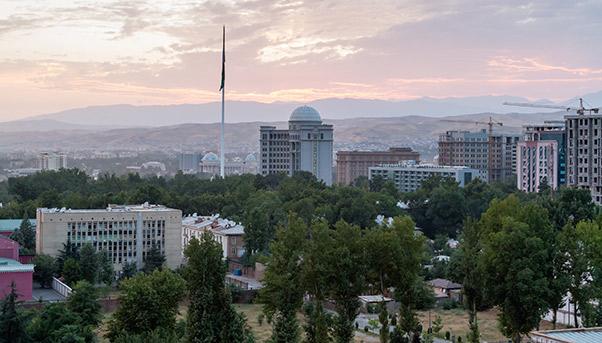Tajikistan possesses great potential for hydropower generation. In recent years, the country, which has the Nurek Dam, one of the tallest in the world, has striven to attract international investment to this sector, which is considered strategic. Among the various projects in the country, there is the Sangtuda-1 hydroelectric dam built by Russia’s RAO UES that started generating electricity in January 2008. Meanwhile, China and Iran are participating in the construction of Sangduta-2 and Zerafshan plants.
The next ambitious project is Rogun, which will change the country’s energy programme more than any other and contribute to the development of the economy.
Meeting Tajikistan’s energy demand will be an important part of the government’s agenda to reduce poverty and create an environment that encourages private business. During the winter, about 70% of the population suffers from extensive electricity shortages, estimated at being at least 2,000 gigawatts-hours (GWh) or about 20% of demand. These shortages increased considerably in 2009 when Tajikistan’s power network was severed from the Central Asia Power System and power trade with Central Asian countries was halted.
According to forecasts for the next 10 years, Tajikistan will rely overwhelmingly on hydroelectric power generation, but it will keep suffering from shortages due to difficulties in diversifying into other sectors, notably gas.
Macroeconomic Trend
Tajikistan’s economy slowed in 2015 from the previous year due to the spillover effect from the deteriorated regional macroeconomic situation (downturn in Russia and slower growth in China) and weak demand and lower prices for key export commodities.
Tightening legislation on migration in the Russian Federation and the sharp depreciation of the Russian ruble since 2015 has also contributed to a decline in remittances. This has affected domestic demand, which in turn has weakened growth in services, a major contributor to economic growth in the past.

The slower growth in services was largely offset by an acceleration in construction activity with the implementation of a number of projects supported by private and public investment.
The public sector accounts for 80% of total infrastructure investments made in the country, or 12% of gross domestic product (GDP), while the private sector is responsible for 20%, or only 3% of GDP – much lower than the average for Europe or Central Asia. The main obstacles cited by both local and foreign entrepreneurs are inadequate infrastructure, in particular insufficient and unreliable energy supply and a weak rule of law, especially as regards property rights, tax policy and public administration.
Natural Resources
Tajikistan is regarded as one of the less wealthy of the former Soviet republics. The country depends on aid from Russia and Uzbekistan for its basic needs. The country is nevertheless rich in natural resources like silver, antimony and gold. Other commercially valuable metals include zinc, mercury, fluorspar and strontium, even though the material most exported is aluminum.
The biggest gold and silver deposits are situated in the Soghd province. Fossil fuels are limited to coal, however. The industrial sector is focused on chemical and aluminum products. In particular, aluminum is produced in a Tursunzade smelter near Dushanbe. The textile industry processes locally harvested cotton. Cotton is a major cash crop for export, but privatization of farms has still not been completed.
The country also has a few food processing companies even though agriculture suffers from Soviet-era planning. Other crops include vegetables, fruits, cereals, rice and potatoes.

